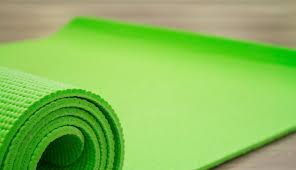We all have some favorite yoga things that we cannot live without.
As a yoga teacher, I have a few extras that the average student probably isn’t hauling around: business cards, a QR code to my latest retreat (Vino & Vinyasa on January 27th, 2024), and an iPad for my yoga class notes and music.
But some of the other things I’ve got rolling around in there are indispensable for every yogi.
*Check out the links to my faves in the sidebar 👉
Favorite First
Actually, it’s my bag itself. The Uhawi Yoga Mat Tote is pretty awesome. I primarily love it because it is BIG! I carry around a lot of stuff and I can fit it all in there without too much difficulty. This is a big deal to me since I have gone through several yoga bags already. I just couldn’t get it all in! Or if I did it was a wrestling match to get there.
It comes in a few colors – black, grey, blue, and purple. So you have choices! It may not be as “cute” as some of my past bags, but seriously, the functionality beats the form on this one.
Second Favorite
I LOVE MY MAT! I am obsessed! My Manduka Pro mat is ahhhh-mazing. I have been through quite a few mats and this one truly is the end all be all, IMHO.
I’ve bought the $8-$12 mats at a discount store. Notice I said mats, plural. You get what you pay for. Lots of cute designs BUT no longevity! The mats flaked and stretched out. Additionally, they didn’t really have enough cushion for my joints.
Next up, I tried mats with more cushion. The problem was too much cushion. There wasn’t enough stability in balance poses and they were too stretchy. My down dog turned into a plank without me moving a muscle.
Then I got serious and got my first Manduka Pro. They are not inexpensive ($100+). BUT they have a lifetime guarantee. So if you add up what you would spend on the inexpensive mats, you will pretty quickly surpass the cost of a Manduka mat.
To make it even better, they are made to give high-density cushion. Ultra-dense, 6 mm cushioning provides superior support, stability, and joint protection, along with comfort on any surface. This does make them a bit heavier than the average mat.
Plus they are responsibly made. Each mat is meticulously handmade in an emissions-free German facility with 100% latex-free PVC that has been certified STANDARD 100 by OEKO-TEX.
I now have had 2 of these mats for 8+ years – and they still look and perform like new.
Fave #3
The number 3 spot goes to my cork Gaiam yoga blocks.
One of the number one reasons people give for not trying yoga is that they are not flexible enough. Answer: BLOCKS! They remove that excuse because they allow you to safely reach the floor and maintain proper alignment.
I believe blocks should be a non-negotiable in your practice. They bring the floor closer to you. Blocks allow you to begin to master positions that you might otherwise compromise your safety to achieve. You can start with the block in its tallest position and gradually work your way to lower positions. Eventually, you may be able to reach without the block!
I chose cork blocks even though they are a bit heavy to lug around. The heaviness speaks to their stability, something I feel is a bit lacking in a foam block. I will admit, foam is a little more comfortable if you are lying on the block though.
Final Favorite
Last but not least is my yoga strap. I like to think of them as making my arms longer.
Similar to your blocks, the strap allows you to reach without jeopardizing your form. You get assistance in a stretch or a position. Over time, you will be able to increase your flexibility in that position.
I don’t have a specific brand that I am hooked on; any will usually do the trick. You can even use your towel in some cases. You just need something you can wrap around the area you are trying to reach, like a foot or shin.
Favorites Thoughts
At the end of the day, the items you choose to include in your yoga repertoire may differ. These are the ones that I can’t do without.
Of course, your budget will come into play. Keep in mind, if you love yoga and practice frequently, VALUE and COST are two different things. If you buy items that don’t hold up over time, you may save a few dollars initially (cost) but spend more over time (value). You will want to weigh out what makes the most sense for you.
I would love to hear about some of your favorite items and/or brands. Let’s share the love with the rest of the LAYLO Shala! 💕

P.S. Let’s be besties!! Follow us on Instagram, Facebook, and Pinterest, and join the LAYLO Shala to get the latest news and insider goodies 😍













